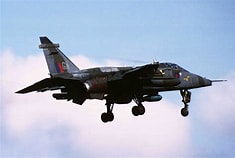Salisbury (Sarum) Probus Club
Sarum Probus Club is an organisation for retired men living in the Salisbury Area.
Previous Meetings 2025
Commonwealth War Graves Commission
14th March 2025

On 14th
March Christopher Brown spoke to the Club about the history and work of
the Commonwealth Graves Commission.
Inspired by his mother’s concern for a great
uncle who had perished in Iraq in 1916 and seeing the lists of the
fallen on the Town Memorial in Wimborne Minster, Christopher became
interested in where dead service personnel were buried. It led to
research into the work of the CWGC and to him becoming a volunteer
speaker for the organisation.
He discovered that the Commission cares for
headstones and memorials in 23,000 locations worldwide. It was founded
in 1916 and supported by 6 Commonwealth Governments – Uk, Canada,
Australia, New Zealand India and South Africa. The policy was agreed
early in the First World War that repatriation of the dead was
impractical. The fallen were at first buried in rough graves, near where
they fell. After the war the bodies were collected into Cemeteries and,
each grave marked with a standard headstone, whatever the rank of the
person interred. This was the first time the dead of Battles were
commemorated in any official way; no formal memorials exist for earlier
conflicts.
The dead of the Second World War were included,
and memorials exist all over the world for the fallen of these battles.
Statutes limited and still limit the CWGC to look after memorials of the
dead of the two World Wars. Those who died in other conflicts are dealt
with by the Ministry of Defence.
Where known each headstone bears basic
information about the departed and may include a personal tribute by
their family. Where the person is unknown the stone records this fact.
Those who died in either conflict but whose remains were never found or
identified, are commemorated on memorials, some large, others more
modest. All are cared for by the CWGC.
The organisation is always in need of volunteers
to help with the work of maintaining graves and spreading information
about their work.
Christopher received a warm ovation for a very
detailed and carefully prepared talk.

On 11th April Group Captain Ron Burrows gave us a
fascinating presentation of his years as an RAF pilot under the
heading “Testing Fast Jets 1962 – 1988.” He emphasised that his talk
was largely about his experience of the historic RAF, rather than an
account of how it operates today.
Ron first served as a pilot in Aden; there he
trained for many hours on a variety of jet planes. There the British had
a presence striving to prevent the ingress of insurgents from
surrounding Arab States. Once trained, he joined the squadrons on round
the clock duty supporting the British Army. At that time the airport in
Aden was one of the busiest in the world. With no modern satellite
devices, the pilots had to find targets marked by personnel on the
ground who laid day glo strips or created smoke indicators.
Ron remained in Aden for 2 years and then
returned to the UK where he spent time as an instructor before
progressing to his main role as a test pilot, at first with the United
States Navy and then in England at Boscombe Down. The main aim was to
make sure that the aircraft produced by designated suppliers matched the
claims of those suppliers and, also met the needs of the Military
Services.
If a plane was designed to perform in very low
temperatures then it was put through icing tests to see it performed
satisfactorily. Cold temperatures for instance can cause problems with
the hydraulics on an aircraft. Similarly tests were devised to test the
performance of aircraft in very hot and very dusty environments.
Obviously a test pilot flying a new design of
aircraft with no simulators available to prepare him and only a few
hours in which to study the instruction manual, ran risks and often
there were unexpected outcomes; noses that suddenly rose or dropped,
landing procedures that didn’t quite go as planned. Ron had a few narrow
escapes and admits he was lucky.
As well as testing the flight of aircraft the
Base at Boscombe Down was responsible for testing ejector seats and
conducting trials on missiles to discover the best way to launch them
from aircraft like the Jaguar that could be carrying a load as heavy as
a World War 2 Lancaster bomber.
Eventually Ron retired, largely unscathed and
had time to present talks like the one given to us. It was fascinating
and members thanked Ron for giving time to share the obvious enthusiasm
he still has for the subject.
For more previous meetings 2019-21 2021 2021-2 2022 2023 2024
For more recent talks click here